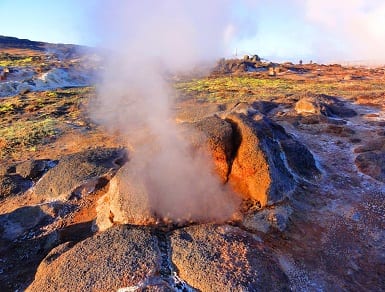Geothermal energy plans unveiled by Energy Department
July 24, 2014Enhanced geothermal systems (EGS) research to receive millions of dollars.
Late last week, the Energy Department announced that as part of the Administration’s all-of-the-above energy strategy, it is putting $31 million toward establishing the first phases of the Frontier Observatory for Research in Geothermal Energy (FORGE) initiative, which is a field laboratory committed to advanced research on EGS in the United States.
Enhanced geothermal systems may one day be able to power 100 million homes.
EGS are artificial reservoirs that have been constructed under the Earth’s surface in areas where hot rock exists but where fluid can only flow through limited pathways. During the development of these reservoirs, underground fluid pathways are made using a safe drilling process, which eventually increases the size and connectivity of these pathways within the hot rock. Once enhanced, the pathways enable fluid to flow all through the rock, bringing heat to the surface and producing electricity.
In the long run, enhanced geothermal systems could become a domestically accessible renewable energy resource that is carbon free, generating 100 gigawatts, which is about the equivalent of powering an estimated 100 million homes.
According to Dave Danielson, the Assistant Secretary for Energy Efficiency and Renewable Energy, “The FORGE initiative is a first-of-its-kind effort to accelerate development of this innovative geothermal technology that could help power our low carbon future.” Danielson added that the approach “could drive down the cost of geothermal energy and further diversify our nation’s energy portfolio.”
Developing engineered geothermal energy reservoirs involves a process not unlike fracking.
Although there is a notable difference between EGS and hydraulic fracturing, like fracking, FORGE uses techniques that will “effectively stimulate large fracture networks in various rock types.” In other words, wells will be drilled into the target areas and water will be injected at high pressure and/or heated to break (fracture) the rock. This process is continued until there are large enough pathways throughout the rocks to be able to sustain an efficient and effective reservoir with an ideal flow and heat rate.
That being said, it is unlikely that EGS development for generating geothermal energy would lead to the type of negative environmental impacts that have been associated with fracking for natural gas. The enhanced system appears to have a lot of green potential.


 With over 15 years of reporting hydrogen news, we are your premier source for the latest updates and insights in hydrogen and renewable energy.
With over 15 years of reporting hydrogen news, we are your premier source for the latest updates and insights in hydrogen and renewable energy.